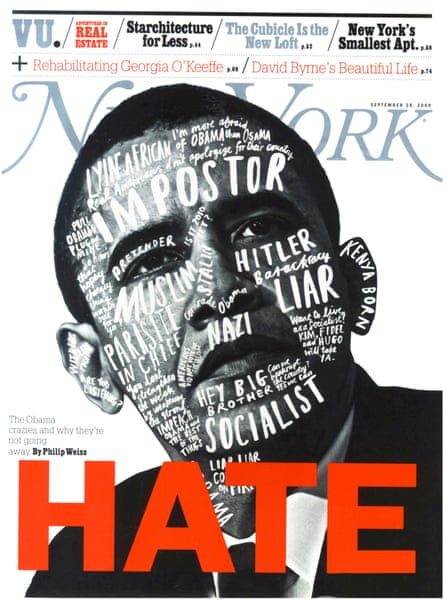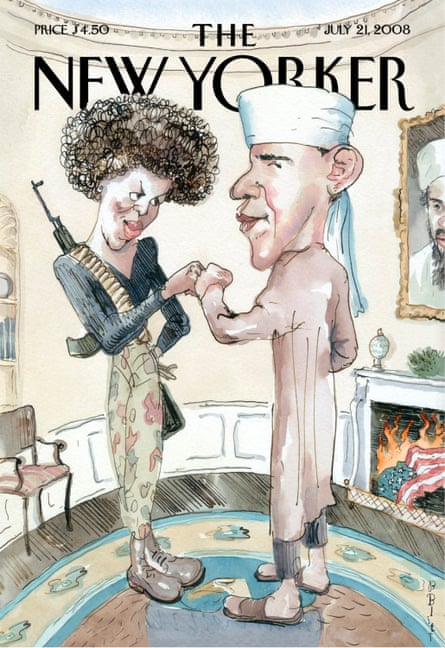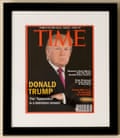In October 2004, Barack Obama, then an Illinois state legislator, appeared on the cover of Black Enterprise, a popular African-American business monthly. It was his first-ever cover, and he shocked the magazine’s editors by proclaiming his intention to run for the United States Senate. They wondered if the young statesman was setting his hopes too high. Nevertheless, they ran the cover story with the prophetic headline: The next big thing in politics.
Cut to 2008, and Obama, having made it to the US Senate, now had his sights on the presidency. The experts said that America was not ready for an African-American leader; that white people wouldn’t vote for a non-white candidate or a man with a funny-sounding name, whose middle name is Hussein and who actually has Muslim relatives; and that even if they did, he would be assassinated before he saw out his first term.

After they were proved wrong and Obama was elected in November 2008, people went out in droves to buy newspapers and magazines with him on their covers, as commemorative keepsakes. His face was everywhere, providing print publishers with a bump to flagging sales. In a few short years, Obama had risen from obscurity to become the most famous person in the world.
I was in New York on election night 2008, and I too was swept up in the melee over the country’s first African-American president. I bought several newspapers and magazines featuring the face of the new commander-in-chief, and before long found myself fanatically collecting examples from all over the world, trawling the newsstands and eBay, then wrapping my finds in plastic jackets and placing them carefully into storage, like ancient artefacts. Soon I had hundreds.
There has never been a president who has straddled such a diversity of titles, from political and literary journals to hip-hop monthlies and comic books. His allure as a cover star went far beyond his vocation. Obama was the Sidney Poitier of politics – not only because he was the first black man to break through the racial restrictions of his profession, but also because he possessed the same dignified aura and princely posture.
During his eight-year tenure, the press presented Obama as feminist, communist, fashion model, Jew, the messiah, Superman, George Washington, President Franklin Roosevelt, Julius Caesar, Muslim terrorist and even the Hindu deity Lord Shiva. This bizarre kaleidoscope of characterisations reflected a sense of confusion about what Obama stood for and the impossible scope of expectations heaped upon him.

The two Obama covers that stirred the most contention when he was in office were published by New York magazine (28 September 2009) and the New Yorker (21 July 2008). The former appropriated artist Shepard Fairey’s famous Obama HOPE poster, turning it on its head to reflect the views of those who the cover line referred to as “the Obama crazies”. The president’s face was graffitied with words such as socialist, impostor and Muslim, and the word HOPE was replaced by HATE. The cover – voted the most controversial of the year by the American Society of Magazine Editors – was criticised for its malevolent depiction of the new president, but the magazine maintained that the words used reflected not their views, but those of a section of Obama’s dissenters.
A year earlier, the New Yorker made headlines around the world just hours after its issue hit newsstands. It featured a cartoon, entitled The politics of fear, depicting Barack and Michelle Obama as terrorists standing in the Oval Office. Obama, who is a Christian, is dressed in traditional Muslim clothing, while Michelle is in Black Panther-style military fatigues, an AK-47 slung over her shoulder. The pair exchange a fist bump while an American flag burns in the fireplace beneath a portrait of Osama bin Laden.

The day after its release, the cover was among the top 20 Google searches. But while the controversy propelled newsstand sales to record levels, editor David Remnick was forced to come out in defence of the artwork. “What I think it [the cover] does is hold up a mirror to the prejudice and dark imaginings about Barack Obama’s – both Obamas’ – past, and their politics,” he stated, later adding drily: “A satirical cartoon would not be any good if it came with a set of instructions.”
It was during the buildup to the 2008 election that Obama was first cast by the US print media as Superman and the messiah (or Obamessiah, as he was often called). The 20 March edition of Rolling Stone featured an illustration of the statesman bathed in an angelic glow of white light, while the cover of the New Republic’s 30 January issue depicted him as a Christ-like figure within a stained glass window, complete with halo. Meanwhile, the winter 2009 cover of Ms featured the president-elect as a black feminist Superman. Obama, not as president but as saviour.
Was it racist to depict Obama this way, in the knowledge that doing so was to set him up to fail? Some would say no, because that is simply how he presented himself to the 2008 electorate: as a transformative figure who would fix everything, who would bring radical change. Of course, every white president before Obama promised the same thing while electioneering – yet the press chose not to depict them as a flying demigod in crimson underpants. Because Obama was the first black president, expectations were high, and when he turned out not to have magic powers many felt let down.
The 20 October 2012 edition of the Spectator skilfully captured the end of Obama’s honeymoon period: an illustration of the president, again as a caped Superman figure, only this time caught in the midst of a fatal kryptonite moment, falling helplessly out of the sky, his powers sapped, his body suddenly mortal.

Overall, however, Obama’s covers have been overwhelmingly more flattering than Trump’s. Where Obama was depicted as a charismatic statesman, Trump has been lampooned as a buffoon; where Obama was portrayed as a family man, Trump has been derided as a sexual predator. In what looks like an outtake from a Marvel Comics plotline, two separate 2016 covers of the New York Daily News depict Obama as Superman, Trump as Batman’s Joker.

This June it was revealed that on the walls of four of Trump’s golfing properties hung framed copies of a fake Time magazine cover featuring his own image, along with the cover line: “The Apprentice is a television smash!” Was jealousy the primary motivator in manufacturing his own favourable cover story? Obama graced 12 Time covers during the 2008 election year, compared to eight for Trump in 2016.
The cover of Time magazine on 2 Feb 2009 captures the moment many thought would never come: the inauguration of Obama as the 44th president of the United States. When the country’s very first president, George Washington, was inaugurated on 30 April, 1789, black people there were slaves. Now, 220 years later, here was an African-American president. It was a fairytale come true, and this image – arguably the most powerful in American history – marks that dramatic, startling moment.
